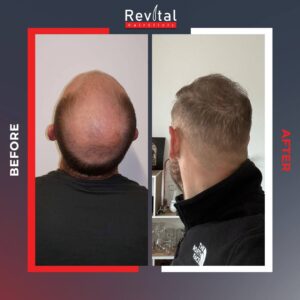To Whom Can Hair Transplantation with Sapphire Method Be Applied?
Hair loss is a common problem that affects millions of people worldwide, regardless of age or gender. For those struggling with hair thinning or baldness, Sapphire hair transplantation has become one of the most advanced and effective solutions. But not everyone is a candidate for this technique, which uses sapphire blades for precise and minimally invasive follicle implantation.
In this article, we’ll discuss the ideal candidates for Sapphire hair transplantation and who can benefit most from this cutting-edge treatment.
What is Sapphire Hair Transplantation?
Sapphire FUE (Follicular Unit Extraction) is a refined version of the traditional FUE hair transplant method. What sets Sapphire FUE apart is the use of sapphire blades for creating tiny incisions in the scalp. These blades are made from a highly durable material (sapphire), allowing for greater precision and minimal scarring compared to traditional steel blades.
This method offers significant benefits, such as:
- Natural-looking results due to precise graft placement.
- Faster recovery times with minimal discomfort.
- Higher follicular density, achieving a fuller appearance.
However, Sapphire FUE isn’t suitable for everyone. Let’s explore who can benefit most from this treatment.
⚕️ Ideal Candidates for Sapphire Hair Transplantation
- Individuals with Stable Hair Loss
One of the most important factors in determining suitability for Sapphire FUE is whether your hair loss is stable. If your hair loss has been occurring for a while and has started to slow down, you may be an ideal candidate.
- Stable hair loss means that the hair loss process has plateaued, and you won’t lose much more hair in the future.
- This is especially important for those undergoing early-stage hair loss, such as a receding hairline or thinning crown.
For individuals with more progressive or unpredictable hair loss, doctors may recommend waiting until the hair loss pattern stabilizes before opting for a transplant.
- Adults with Sufficient Donor Hair
Sufficient donor hair is essential for the success of the Sapphire hair transplantation procedure. The donor area is typically the back or sides of the head, where hair is resistant to thinning and is typically used to harvest hair follicles for transplantation.
- Ideal candidates have thick, healthy hair in the donor area.
- If you have thinning donor hair or scar tissue from previous hair transplants, this could affect the feasibility of the procedure.
- Hair density in the donor area should be enough to allow for multiple graft extractions without leaving visible thinning.
If you don’t have a sufficient amount of donor hair, your surgeon may explore other options like PRP therapy (Platelet-Rich Plasma) to enhance hair growth or scalp micropigmentation.
- Men and Women with Androgenetic Alopecia (Male and Female Pattern Baldness)
Androgenetic alopecia, commonly known as male pattern baldness or female pattern hair loss, is one of the most common causes of hair loss. This condition typically follows a predictable pattern and affects both men and women, though the pattern of hair loss may differ.
- Men usually experience hair loss starting at the temples or crown, leading to bald spots or a receding hairline.
- Women often experience more diffuse thinning, usually starting at the parting of the hair.
Both men and women with androgenetic alopecia can benefit from Sapphire hair transplantation, especially if the hair loss is localized (e.g., the crown or hairline) and not too extensive.
- Individuals with Small to Moderate Areas of Baldness
Sapphire FUE is most effective for patients who have small to moderate areas of baldness. This method can restore hairlines, add volume to thinning areas, and cover small to medium-sized bald patches.
- Small to moderate hair loss is typically easier to treat with the Sapphire FUE technique because the procedure requires fewer grafts, and achieving a natural look is more manageable.
- For larger areas of baldness, the procedure may still be successful, but multiple sessions or a higher number of grafts might be required.
If the area to be transplanted is large or the hair loss is severe, it’s important to have a consultation with an expert to discuss realistic expectations and possible outcomes.
- Individuals with Realistic Expectations
Having realistic expectations is crucial for anyone considering hair transplantation. While Sapphire FUE can provide excellent results, it’s important to understand that:
- Hair transplantation is designed to restore hair to areas where hair loss has occurred, but it doesn’t necessarily restore a person’s hair to its original thickness or density.
- Sapphire FUE can significantly improve the appearance of a thinning hairline or crown, but results depend on the number of grafts, donor hair quality, and the area being treated.
- It’s important to understand that hair loss may continue to progress in other areas of the scalp after the procedure, so future touch-ups might be necessary.
Ideal candidates are those who are prepared for the possibility of additional treatments down the line, especially if they have extensive or progressive hair loss.
- Healthy Adults with No Major Medical Conditions
Before undergoing Sapphire FUE hair transplantation, it’s important that candidates are in good general health and don’t have any conditions that could affect the healing process or the outcome of the procedure.
- Non-smokers are often preferred since smoking can impair circulation and slow the healing process.
- Candidates should not have active scalp infections or conditions like psoriasis or seborrheic dermatitis, as these conditions may interfere with the procedure and healing.
- Healthy adults with no underlying medical conditions (like diabetes or autoimmune disorders) are the best candidates for Sapphire hair transplantation.
- Younger Individuals with Stable Hair Loss
Sapphire hair transplantation is typically most effective for individuals who are between the ages of 25 and 50, as they are more likely to have stable hair loss. However, younger patients under 25 might be advised to wait until their hair loss stabilizes.
- Younger individuals might still experience fluctuations in their hair loss, which could impact the overall result of the transplant.
- For individuals under 25 with early-stage hair loss, it’s important to have a thorough consultation with a surgeon to evaluate if it’s the right time for a hair transplant.
Who Should Avoid Sapphire Hair Transplantation?
While Sapphire FUE is a highly effective and minimally invasive procedure, not everyone is a suitable candidate. People who may not be ideal candidates for Sapphire hair transplantation include:
- People with insufficient donor hair: If the donor area is too thin or weak, the procedure might not be possible.
- Individuals with active scalp conditions: Conditions like eczema, dermatitis, or scalp infections should be treated and resolved before undergoing a transplant.
- Unrealistic expectations: If you expect the procedure to give you a full head of hair exactly as you had in your youth, you may not be the best candidate.
⚕️ Conclusion
Sapphire hair transplantation offers a modern, effective solution for individuals looking to restore their hairline and achieve fuller, natural-looking hair. The best candidates for Sapphire FUE are typically:
- Those with stable, moderate hair loss.
- Individuals with healthy donor hair.
- People who have realistic expectations and are in good general health.
If you’re considering Sapphire hair transplantation, the first step is to schedule a consultation with a qualified hair transplant specialist. They will assess your condition, hair loss stage, and donor hair availability to determine if you’re a suitable candidate for the procedure.
At Revital Hair Clinic, we specialize in Sapphire FUE and offer personalized care to ensure the best results. Contact us today to learn more and start your journey to fuller, thicker hair!
Revital Hair Clinic © 2024












Leave a Reply